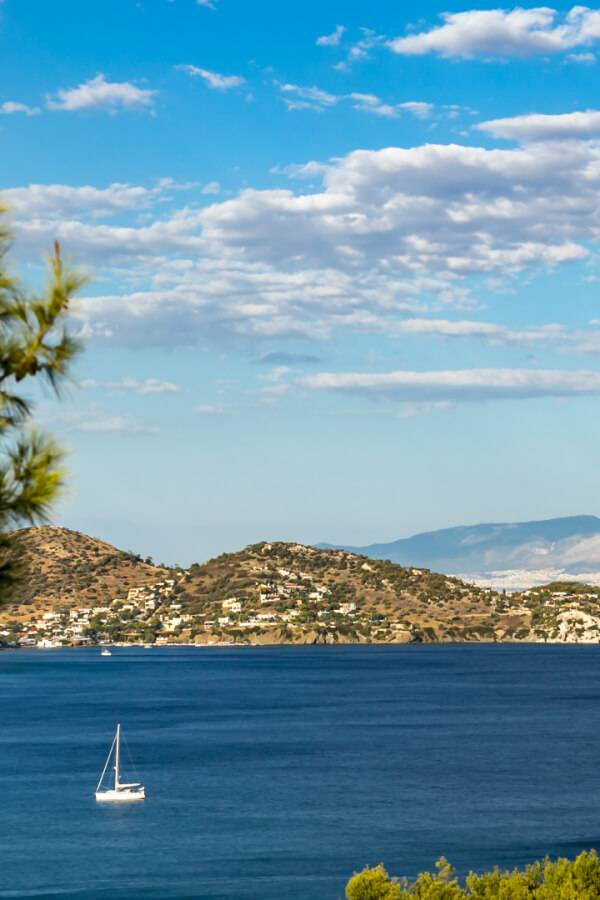Salamis
Population: 39,283 (2011)
ISLAND OVERVIEW
Salamis is the largest Greekisland in the Saronic Gulf, about 2 km (1 mile) off the coast from Pireaus and about 16 km (10 mi) west of central Athens The chief city, Salamina, lies in Salamis Bay, which opens into the Saronic Gulf. On the Eastern side of the island is its main port, Paloukia, second in size only to Pireaus, Athens. Salamis is mostly rocky and mountainous with its highest point at Mavrovouni at 404 m (1,325 ft). There is a pine forest in the South, which is, unfortunately, often a target for fires.
Salamis is the largest, most densely populated island of nearly 40,000 people. It is the closet island to Athens, making it very popular for holiday and weekend visits. Many people work in the marine industries such as fishing, on ferries and in shipyards while others work in agriculture and hospitality. Salamina is considered to have the largest fishing boat fleet in Greece and is famous for building traditional fishing boats. It is also home to Salamis Naval Base, headquarters for the Hellenic Navy.
There is much to do and see on the island including visiting the Acropolis of Salimina, the cave of Euripides, the Monastery of Agios Nikolaos and the ancient city of the heroes of the Trojan war.
It is a short trip on a ferry from the Piraeus Athens port to Paloukia on the eastern side of Salamis.

The Island & Its History
click image to view in Google Maps
Salamis was probably first colonised by Aegina, then became an Athenian possession following the war between Athens and Megara around 600 BC. The ancient capital was at the South of the island, then in classical times it was to the east, on the Kamatero Peninsula overlooking the Strait of Salamis, and in modern times it is on the west.
According to Homer’s Iliad, Salamis took part in the Trojan War with twelve ships under the leadership of Ajax. Salamis island is known for the Battle of Salamis in 480 BC. It is said to be the birthplace of Ajax and Euripides, the latter’s birth being popularly placed on the day of the battle.
During the German invasion of Greece in World War II, the harbour was bombed by the Luftwaffe on April 23, 1941, sinking the Greek battleships Kilkis and Lemnos.
In the 1960s and 1970s, during the military junta period, changes in land legislation allowed the subdivision of land plots. This opened the island to massive unplanned and unregulated urban and suburban development, including many weekend homes, especially along the northern and eastern coasts. The lack of corresponding investment in infrastructure, combined with heavy industry, has led to sea and beach pollution on this side of the island. There are, however, ongoing initiatives to improve the situation.
Prayer Points
- The people on the island will realize their need for God and their eyes will be opened to the truth and love of God through reading the Bible for themselves.
- The Lord will work in the lives of all the God-fearing religious people already living on this island, and bring healing & refreshment to their lives.
ADOPT THIS ISLAND
If you are committed to praying for this island and its region, please drop us a note, we would love to know about it and keep you posted with prayer updates!
By completing this form, I consent to receive content from Broad Reach Maritime in accordance with our Privacy Policy.

